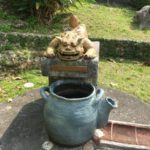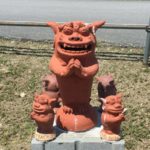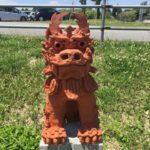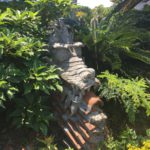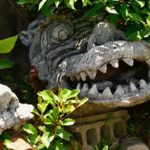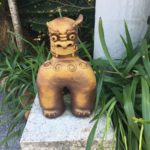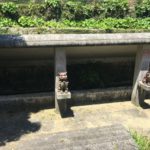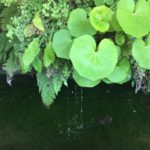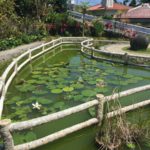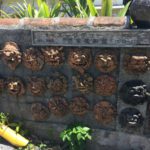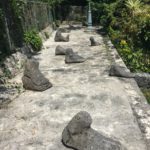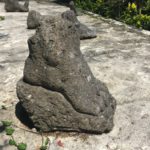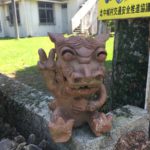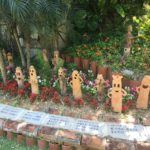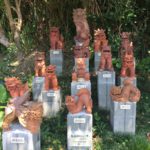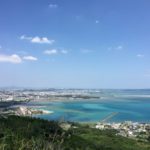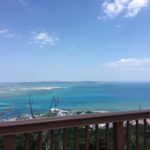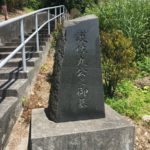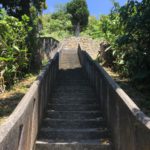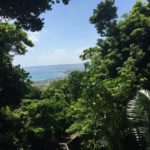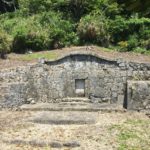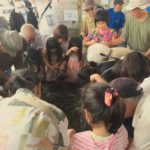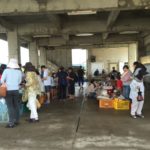ハンタ hanta: Okinawan word for “cliff”
道 michi: road or path
Hanta Michi is an old Ryukyu kingdom road constructed around the Gusuku era (12th century). It runs from Shuri-jo to Katsuren-jo, passing through Kouchi-jo in Nishihara and Nakagusuku-jo in Nakagusuku Village. Several historical cultural properties remain along this path. It was lined with pine trees, cutting through hills and cliffs along the way.
Nowadays, the most accessible path of Hanta Michi is from the SanA on Rt 29 in Nakagusuku through to Nakagusuku-jo. Agai-tidabashi (bridge behind the SanA/Matsumoto Kiyoshi/Wafuutei) is the typical starting point. The trail ends at the border with Nakagusuku-jo– if you enter the premise you are supposed to pay the entrance fee at the end of the path marks the beginning of the castle ruins site. Another important thing to remember is that the gate to leave the castle site will be LOCKED if you are walking the trail during closed hours (one of my friends ran into trouble with this…), so if you plan on using the castle ruins as an exit, you must go when the premises is open for business.
The path runs from urban to rural farms to forested area, with sweeping views over Nakagusuku Bay. Occasionally the path is overgrown, depending on the season. A good tip to remember is to look for the white-ish coral stone in the road along the path in most areas. It is not too long of a “hike” (walk?) to do the whole thing, maybe 5 km or so one-way, within 2 hours if you walk with a regular pace with a few stops for pictures or a snack.
If you plan your day well, you can make sure to take a break or end at one of the restaurants along the path (near the SanA end, not Nakagusuku-jo end). I recommend either LOHAS garden or Hanta Baru, both have good food and gorgeous views overlooking Nakagusuku Bay.
Click the imgur link for images:
https://imgur.com/a/NBoGF
Sites along the Hanta Michi:
Agai-tidabashi Bridge 東太陽橋: Stunning views of Nakagusuku and the bay can be admired on sunny days. It is also a very popular spot to watch the first sunrise of the New Year and for full moon viewing.
161.8 Kouchi Jinchi 161.8高地陣地: Atop of the rocky mountain at an elevation of 160m in Kitauebaru area, the Japanese army built a high-ground position, known as 161.8 Kouchi Jinchi. A panoramic view, north to south, from Chatan town and Yomitan village to the Chinen peninsula is possible from this location.
Kishimakono-taki キシマコノ嶽: Okuma settlement began at the top of the mountain and people in the settlement still pray at this prayer ground today.
Arakaki Stone Bridge 新垣の石橋: This arched stone bridge is located over the stream near the fields of the Arakaki settlement. Similar types of stone bridges existed until just after WWII, however now there is only one remaining.
Prefectural Road Construction Monument 県道開削記念碑: This monument was built in commemoration of the opening of the Futenma-Yonabaru route (currently rt. 35) in October 1934.
Tunmaasu ツンマース: A pine tree is encircled by a low stonewall. Arakaki gusuku and Nakagusuku-jo are to the east and Ginowan is to the west.
Arakaki Gusuku 新垣グスク: The year for the construction of this castle is unknown, however, it is estimated to be early 14th century. Utaki (sacred place in Ryukyu culture) and shrine are seen inside the castle ruin grounds. These places are considered to be highly significant for the Arakaki settlement.
Uchibara-no-tun 内原の殿(ウチバラノトゥン): Hall of worship in Arakaki gusuku where people pray for health, longevity and to give thanks for good harvests.
Perry’s Banner Rock (Taachii Ishi) ペリーの旗立岩: It is said that Commodore Perry and his expedition team placed the American flag on top of this rock with a gun salute to commemorate their conquest during their expedition in Okinawa.
Giisu-no-tera ギイスのテラ: Prayer ground located south west of Nakagusuku-jo. The ancestor of Masu Shimabukuro of Soeshi village is said to have enshrined the spirit stone and began the ritual here.
SanA near the starting point of the Hanta Michi: https://goo.gl/maps/BXbBdYVTUh32
Nakagusuku-jo (end point): https://goo.gl/maps/GWHKmPFzMPv
Map Link (Google Maps): here
Extra information on MapItOkinawa: http://www.mapitokinawa.com/search?q=hanta
